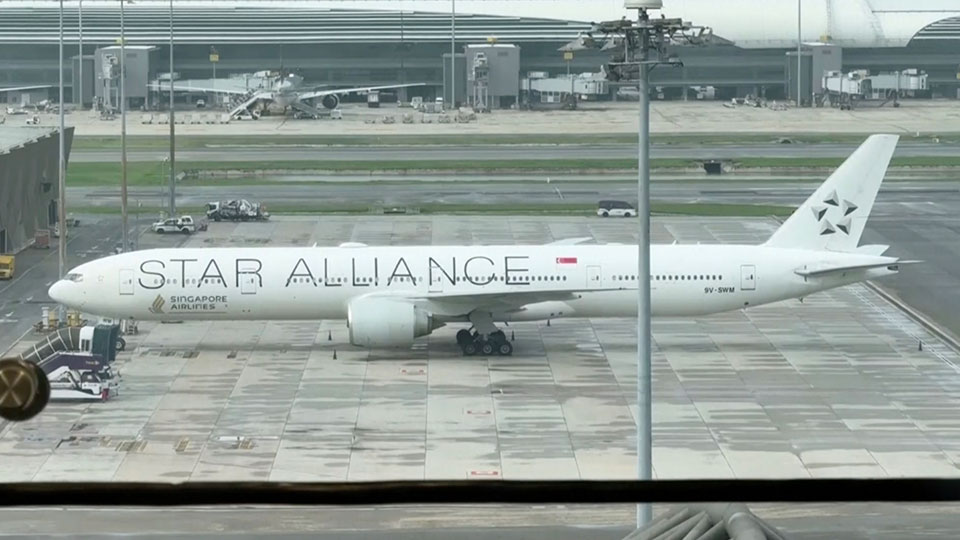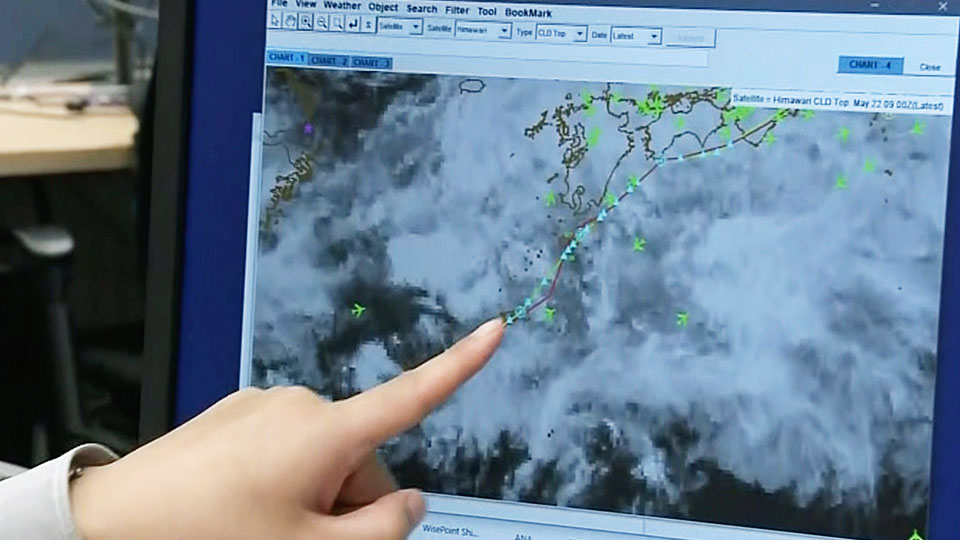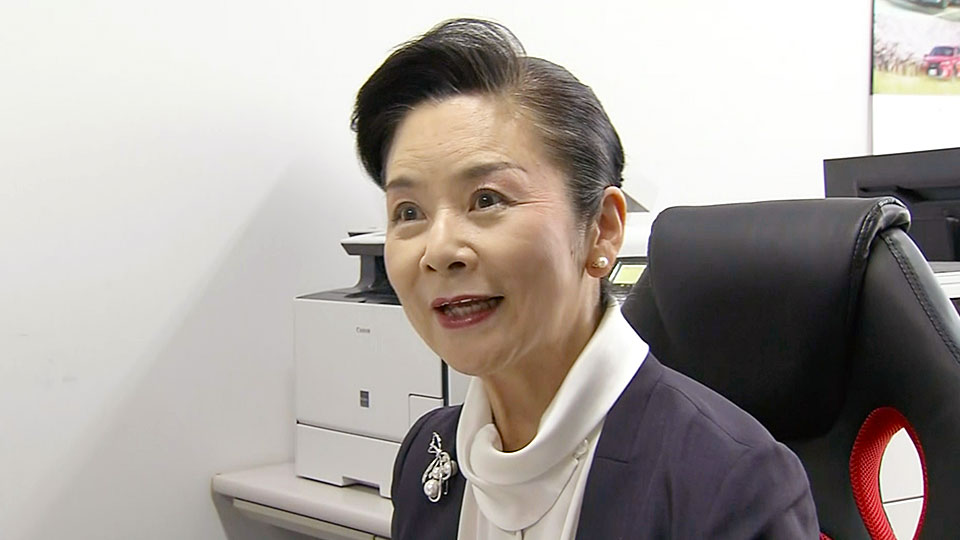What can be done to prevent air turbulence injuries? | NHK WORLD-JAPAN News
The deadly accident Tuesday of a Singapore Airlines flight that hit severe air turbulence made global headlines. But this is not the only accident caused by turbulence. Experts even warn that such cases could increase due to climate change.
A Singapore Airlines Boeing 777 airplane bound from London to Singapore encountered sudden and extreme turbulence at an altitude of about 11,000 meters above Myanmar, about 10 hours after takeoff. The plane later made an emergency landing at an international airport near Bangkok, Thailand.
Thai authorities said 211 passengers and 18 crew members were on board. A 73-year-old British male passenger died. The authorities indicated that he may have died of a heart attack. More than 80 others were injured.

The private flight tracker Flightradar24 said the flight encountered a rapid change in aircraft pitch in a way consistent with sudden turbulence. It added that the unexpected changes lasted nearly one minute.
Footage of the plane after landing shows objects scattered about the cabin. Oxygen masks dangled above the seats. An overhead luggage bin was damaged, apparently after being hit by something.
One passenger said he saw people without seatbelts fastened being thrown to the ceiling. Another said he was terrified and vowed not to fly again for a while.
More than half of air accidents in Japan are caused by turbulence
The Japan Transport Safety Board investigated 67 air accidents in the country in the 20 years up to 2023. It found that 37 were caused by turbulence.
It says 119 people were injured in these accidents, including 45 who suffered serious injuries. Of them, 63 were passengers and 56 were flight attendants.
In 2014, 12 people were injured when a passenger plane from South Korea bound for the United States was hit by turbulence over Japan.

A video taken by a passenger shows passengers screaming, and meals and plates scattered on the floor of the cabin.
In 2009, a Northwest Airlines flight from Manila to Tokyo’s Narita Airport hit turbulence off the coast of Chiba Prefecture, injuring 38 people, four of them seriously. The Transport Safety Board suspects the four badly injured passengers had either left their seats, were not wearing seatbelts, or were not wearing them properly.
The Transport Safety Board’s analysis of injuries from turbulence over the past 20 years shows that most cases occurred during cruising or when the plane was descending.
The report cites, as reasons for injuries, passengers who left their seats during cruising to use the toilet, or some other reason, and cabin attendants who were cleaning the galley during descent.
The report found only four cases that occurred during ascent, and only one case when a flight was at its final entry into the runway. The report assumes that’s because more passengers and flight attendants wear seatbelts at such times.
The report says 56 percent of the passengers who were seriously injured were not seated. The rest were seated, but half of them were not wearing seatbelts.
It also says 92 percent of the flight attendants who were seriously injured were not seated. Only two people who were injured were seated when turbulence hit.
The Transport Safety Board stresses the importance of wearing seatbelts. It advises airlines to instruct passengers to wear them properly, and that flight attendants should be seated as much as possible.
Expert: Weather conditions where turbulence can occur is on the rise
A meteorology researcher warns turbulence may rise. Watanabe Shingo, Principal Researcher of Japan Agency for Marine-Earth Science and Technology said,
“An analysis of data from the past 40 years shows that weather conditions where turbulence is likely to occur are increasing due to global warming.”
He also pointed out that not only will the number increase, but also there is a possibility that turbulence may occur in more places than before and people need to be on the alert.
NASA also points out an increase in air turbulence caused by climate change.
Airlines taking measures to reduce turbulence risk
All Nippon Airways officials say their flight dispatchers have turbulence avoidance uppermost in their mind when they determine flight routes. They select what they believe is the safest route and altitude based on satellite images of clouds and turbulence forecasts from the Japan Meteorological Agency.
During the flight, the dispatchers provide pilots with the latest weather updates, and other information, including reports from other pilots who have encountered turbulence. Pilots often change the flight route to avoid such risks.

ANA has also introduced a system that enables pilots to immediately share turbulence information. The system, EDR, indicates with numbers and colors the degree of the shaking, as well as the location and time that can be shared with other pilots.
Such a system has been in operation within ANA group companies, but in 2023, the airline joined an international data base system led by the International Air Transport Association that shares turbulence reports. About 30 airlines from around the world have joined the program.
ANA is also working on a study using AI to predict turbulence based on past data.
Sakamoto Kei, who handles weather systems at ANA, said weather phenomena are becoming extreme due to global warming, making it difficult to read turbulence. He added it’s vital to continuously update the technology and take measures to avoid incidents.
Former flight attendant: Wear your seatbelt
Egami Izumi, a visiting professor of the University of Tsukuba, is a former Japan Airlines flight attendant. She said she herself had been injured from turbulence and was unable to fly for about three months. But she said the damage in the Singapore Airlines accident is something she had never seen before. She said: “If the cockpit had provided information that the shaking would happen soon, it might not have been as severe. But turbulence is difficult to predict, so I think it was unexpected for all the passengers and crew.”

She added: “When turbulence hits and people are thrown upward, there’s nothing we can do. So what is important is to prevent it at all cost. If one is wearing a seatbelt, a person will not hit the cabin ceiling. Even if the seatbelt sign is off, passengers should keep their seatbelts fastened because that is the only way they can protect themselves from turbulence.”
Read More:What can be done to prevent air turbulence injuries? | NHK WORLD-JAPAN News
